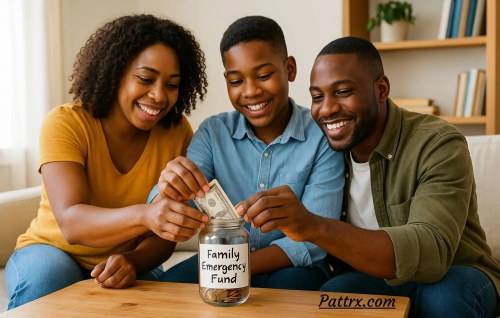5 Essential Steps to Start and Grow Your Emergency Fund

1. Imagine the safety net you need—but start much smaller
Instead of aiming straight for the classic 3–6 months of expenses, begin with a mini-target—such as $500 or even just one week’s worth of essential costs. This smaller goal is easier to reach and gives you a psychological boost from day one. Think of it as planting the first seed in a growing garden—once that seed takes root, momentum builds.
2. Automate and celebrate your progress
Turn saving into a non-negotiable routine by setting up automatic transfers from your income to a dedicated account. Even a modest weekly or monthly amount can gradually accumulate into something substantial. Treat your savings milestones as celebrations—perhaps a small reward when you hit $200, then $500. These little wins reinforce consistency and keep your morale high.
3. Keep it safe, accessible—and somewhere it earns a little extra
Keep your fund separate from everyday spending funds. A high-yield savings or money-market-style account combines safety, liquidity, and slightly better returns—without risking access. In uncertain economic times, some even recommend diversifying holdings to include short-term, no-penalty certificates of deposit (CDs) to lock in favorable rates.
4. Increase your contributions gradually—and opportunistically
Once your savings habit is stable, slowly boost your contributions—say, by 1% more of your income or a dollaristic step like $5 extra per week. When bonus income or tax refunds arrive, direct a chunk toward your fund before you start spending. During economic uncertainty, some experts now recommend aiming for a 12-month “war-chest” to sustain life through extended instability.
5. Use it only for true emergencies and rebuild quickly
Once your fund starts growing, carefully define what counts as an emergency—think medical crises, essential repairs, sudden job loss. Use your fund only for these scenarios. After a withdrawal, prioritize replenishing the account to preserve your safety net. And once you’ve climbed to a healthy goal, it may be time to redirect additional money toward long-term growth like retirement or debt reduction.
Why This Matters Now More Than Ever
Economic uncertainty—like market turbulence or shifting job landscapes—makes having a solid financial buffer essential.
Financial anxiety is real: more than half of adults feel uneasy about their savings, and a significant portion can’t cover even one month of expenses.
A strong emergency fund helps you avoid harmful debt and gives you the confidence to ride out tough times.
Building an emergency fund isn’t about instant perfection—it’s about mindful progress. Start with a small goal, set up an automatic system, and keep your fund accessible but off-limits. As your confidence and capacity grow, so should your contributions—and eventually, your fund. In times when uncertainty dominates the headlines, this simple, steady strategy is your quiet path to financial resilience.
Recommended for you



